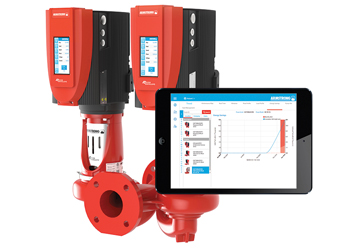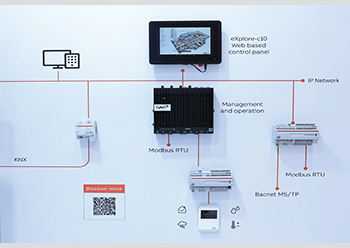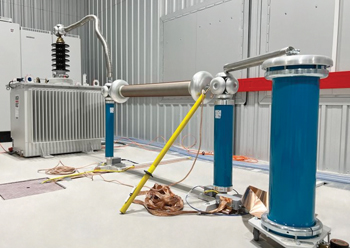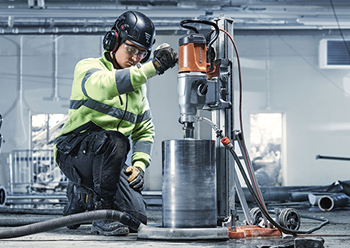
 Armstrong’s Pump Manager helps address performance issues.
Armstrong’s Pump Manager helps address performance issues.
To many of us, the construction boom that transformed a barren desert into a glittering metropolis may seem like only yesterday, but those once newly-constructed buildings are now more than 15 years old. Since then, we’ve seen the advent of Google, the rise of Facebook, and the introduction of driverless cars. With that in mind, how can we possibly believe that heating, ventilation and air-conditioning (HVAC) systems installed before the launch of the first iPhone are still adequate?
In the years since the announcement of Saudi Arabia’s Vision 2030 in 2016, and the launch of the UAE Energy Strategy 2030 the following year, the regional shift towards creating a more sustainable built environment has accelerated rapidly. Sustainability is becoming less of an afterthought and more of a priority as construction moves away from cost-centric methodologies and works towards achieving net-zero emissions.
Given that air-conditioning accounts for a staggering 50 to 70 per cent of energy demand in cities, and that the average pumping efficiency around the world is less than 40 per cent, it is clear that retrofitting outdated HVAC systems offers great potential for decarbonisation. The UAE is, in fact, spearheading the retrofit movement in an effort to improve the energy performance of existing buildings and ultimately reduce carbon emissions. Around 30,000 buildings across Dubai will be retrofitted by the end of 2030 in order to achieve a 30 per cent reduction in energy demand. The retrofits are predicted to save over $22.33 billion and reduce emissions by 1 million tCO2.
The resounding lack of efficiency in HVAC systems can be mainly attributed to pump over-sizing and performance drift. Pump over-sizing is, perhaps, more common than you would expect, with an estimated 75 per cent of pump systems around the world being oversized in specifications – many by more than 20 per cent. Intentionally oversizing equipment is a common practice in the industry to guarantee that the pump can withstand the system’s maximum capacity. While this does reduce some elements of risk, it also introduces significant costs – not only in higher initial outlays for the equipment, but also in operating costs as a result of excessive fluid power.
The second main cause of operational inefficiency, performance drift, is equally as common. This term refers to the incremental degradation in pump performance that occurs as component efficiency and system conditions ‘drift’ away from the original level of operation. Unfortunately, many facility managers accept this loss of efficiency as inevitable. However, in Armstrong Fluid Technology’s global experience with installations, performance drift can, in fact, be prevented.
Recent advancements in variable speed pumping technology have presented an opportunity to solve both challenges through one simple solution: Variable speed pumps respond to real-time system conditions, dynamically adjusting equipment operation to match system demand. The result is a highly efficient system that minimises wear and tear, ultimately extending the life cycle of the motor.
Armstrong Fluid Technology offers a comprehensive portfolio of high-value solutions suitable for retrofit installations. Its Design Envelope Vertical-In-Line Retrofit, for example, provides owners of existing constant speed pumps with an opportunity to save up to 70 per cent on energy costs by upgrading to variable speed. The integrated Parallel Sensorless Pump Control within its Design Envelope pumps also helps to improve performance by allowing multiple pumps to be linked together. This way, the pumps can share load demand and thus run at lower speeds, reducing the likelihood of breakdown or failure.
Active Performance Management services, such as Pump Manager by Armstrong Fluid Technology, are another way in which performance issues can be addressed through retrofit. The software collects data using cloud-based technology and embedded intelligence to deliver insights into pump performance and recommendations for optimisation. With Pump Manager, operating savings start from day one and simple payback is usually reached within five years. Energy savings can continue for the life of the system, delivering up to 40 per cent savings on consumption related to HVAC operation.
Regulatory bodies and corporate entities across the GCC have set goals and roadmaps to be carbon neutral before 2050. If we are to turn these ambitious commitments and goals into reality, planning and timely action are required, starting now. Opting to retrofit older buildings and updating existing HVAC systems through equipment or control system changes can save between 30 per cent and 50 per cent of the energy consumed by pump systems. This will help to avoid a stranded-assets scenario, whereby the building is no longer sellable or leasable because of its poor energy performance.








.jpg)




.jpg)




























.jpg)



































